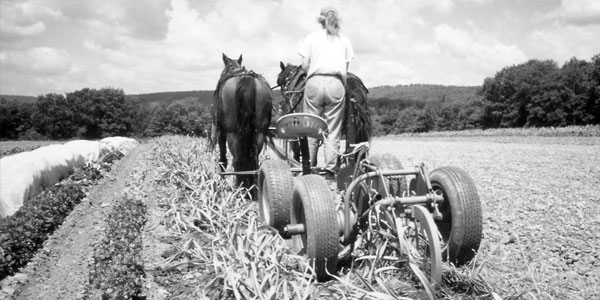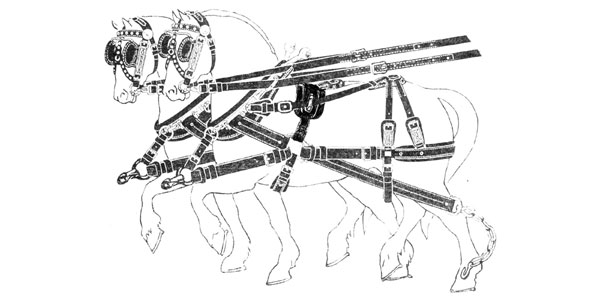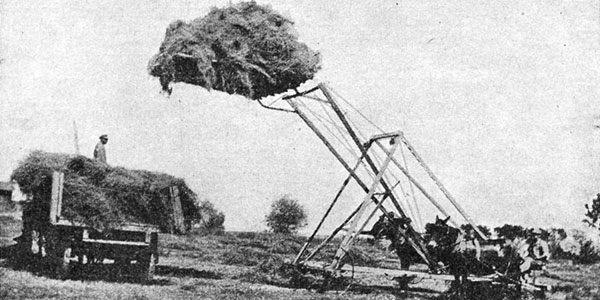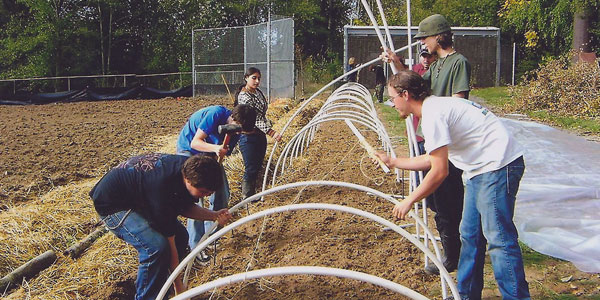
Cultivating Questions: Horsedrawn No-Till Garlic
Cultivating Questions: Horsedrawn No-Till Garlic
photo essay by Eric & Anne Nordell
1: No-tilling garlic in 1999, using an old pull-type subsoiler to open up the planting furrows. We were inspired to try no-tilling vegetables into cover crops after attending the Groffs’ field day in 1996. No-tilling warm season vegetables has proved problematic at our site due to the mulch of cover crop residues keeping the soil too cool and attracting slugs. We thought that no-tilling garlic into this cover crop of oats and Canadian field peas might be the ticket as garlic seems to appreciate being mulched.
2: We modified the subsoiler by attaching an old plow coulter to the beam and using a narrow tooth on the shank. The idea is the coulter slices through the cover crop just ahead of the tooth which rips a slit in the soil. This arrangement is similar in concept to the Groffs’ no-till transplanter except that…
3: …we planted the garlic by hand. No-tilling the garlic turned out to be an advantage in 1999 as the hurricanes which blew through in September left the ground too wet for tilling at this ideal planting date in mid-October.
4: The August seeded cover crop of oats and Canadian field peas died back at the onset of winter, protecting the two experimental rows of no-till garlic from frost heaving. This homegrown mulch also provided excellent erosion control despite all the rain we received last year.
5: We used the same subsoiler, minus the coulter, to harvest the garlic. In the final analysis, the no-till garlic required less labor and produced larger bulbs than our clean-tilled-and-mulched garlic patch. The results were so encouraging that we expanded the trial to six rows in the fall of 2000, this time no-tilling the garlic into cover cropped ridges which made hand planting the cloves into the untilled soil much easier.









